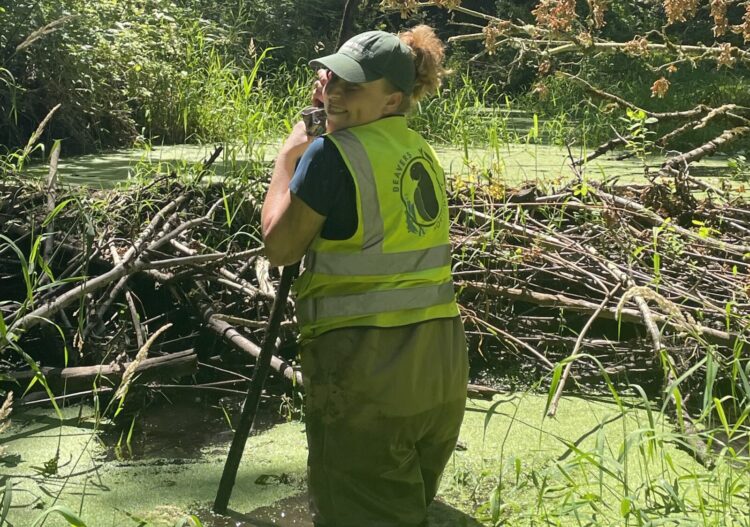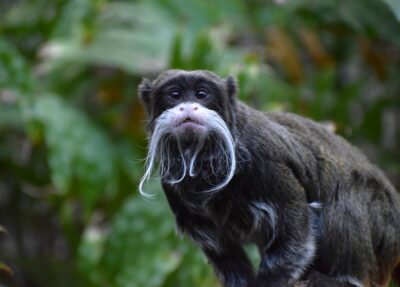This firsthand account was written by Assistant Lead Keeper at Pritzker Family Children’s Zoo Brittany Childs, who received the Feay Field Research Travel Fund grant. Through the generosity of Bruce and Mary Feay, she was able to travel to the West Coast to work on beaver conservation with Beavers Northwest.
I recently visited Seattle, Washington, alongside Beavers Northwest, an organization dedicated to promoting coexistence between landowners and American beavers. Beavers provide many important ecological benefits for water quality and salmon populations, but their activity can cause headaches for landowners and land managers.
Beavers Northwest uses compromise and adaptive management strategies to help keep beavers a part of the landscape while resolving conflicts between people and wildlife. My goal is to gain a greater understanding of wild beaver behavior, wetland ecosystems, and the complex balance between beavers and the landscape they call home. My hope is to build on the care that we provide to the three beaver males at Pritzker Family Children’s Zoo—and to continue finding new ways to educate the public about this keystone species.
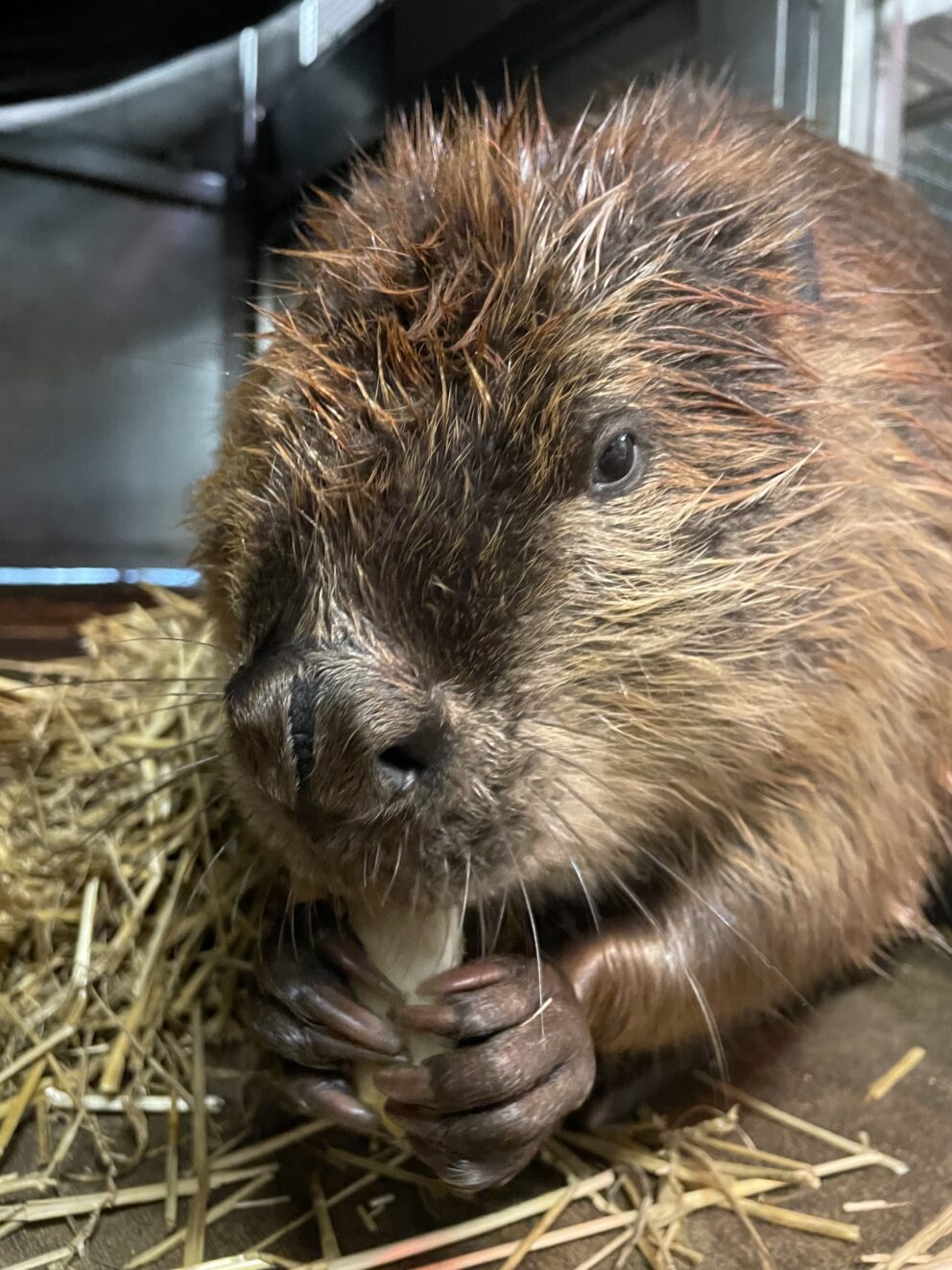
Day 1 – Learning About Beavers Northwest
First, I met with Beavers Northwest to discuss the organization, the long history of beavers within the water systems of Washington, their team’s mission, my goals for the visit, and field safety.
Then we traveled to BNW headquarters, located in a town called Shoreline, which sits about 12 miles north of Seattle on the east side of Puget Sound. There, I met two of the full-time team members, April and Madison, and we packed the car with supplies for site visits and field work: waders, vests, wire, wire cutters, pliers, rakes, work gloves, a first aid kit, and lots of water.
We drove to multiple sites where beavers had built dams, causing various levels of flooding. At each of these locations the BNW team had previously worked to notch out some of the dam and built exclusion fencing to allow the flow of water. Exclusion fencing devices are used to deter the beavers from rebuilding at the notched areas. Today we were surveying the sites to see if there was any additional beaver activity observed upstream.
There are beavers everywhere here!
Day 2 – Notching Beaver Dams
We spent the day checking on a multitude of wetland habitats, beaver dams, notch exclusion devices, and a few tree wrapping projects that BNW had previously completed. I also got to “notch out” a beaver dam on my own! Using a rake to navigate the depth of the stream, we carefully climbed on top of the dam and began to remove sticks and debris until the flow of water downstream returned.
That evening, we met at Meadowbrook Pond for a beaver-themed Nature Walk. These free educational walks offered by BNW give the public an opportunity to learn about beavers and their impact on the local landscape. This also gave me a chance to share about the beavers at Lincoln Park Zoo: Slappy, Chewy, and Chipper! The night was made even more memorable after a family of beavers came out of their lodge and guests were able to see them swimming, foraging, and chewing on their favorite foods.
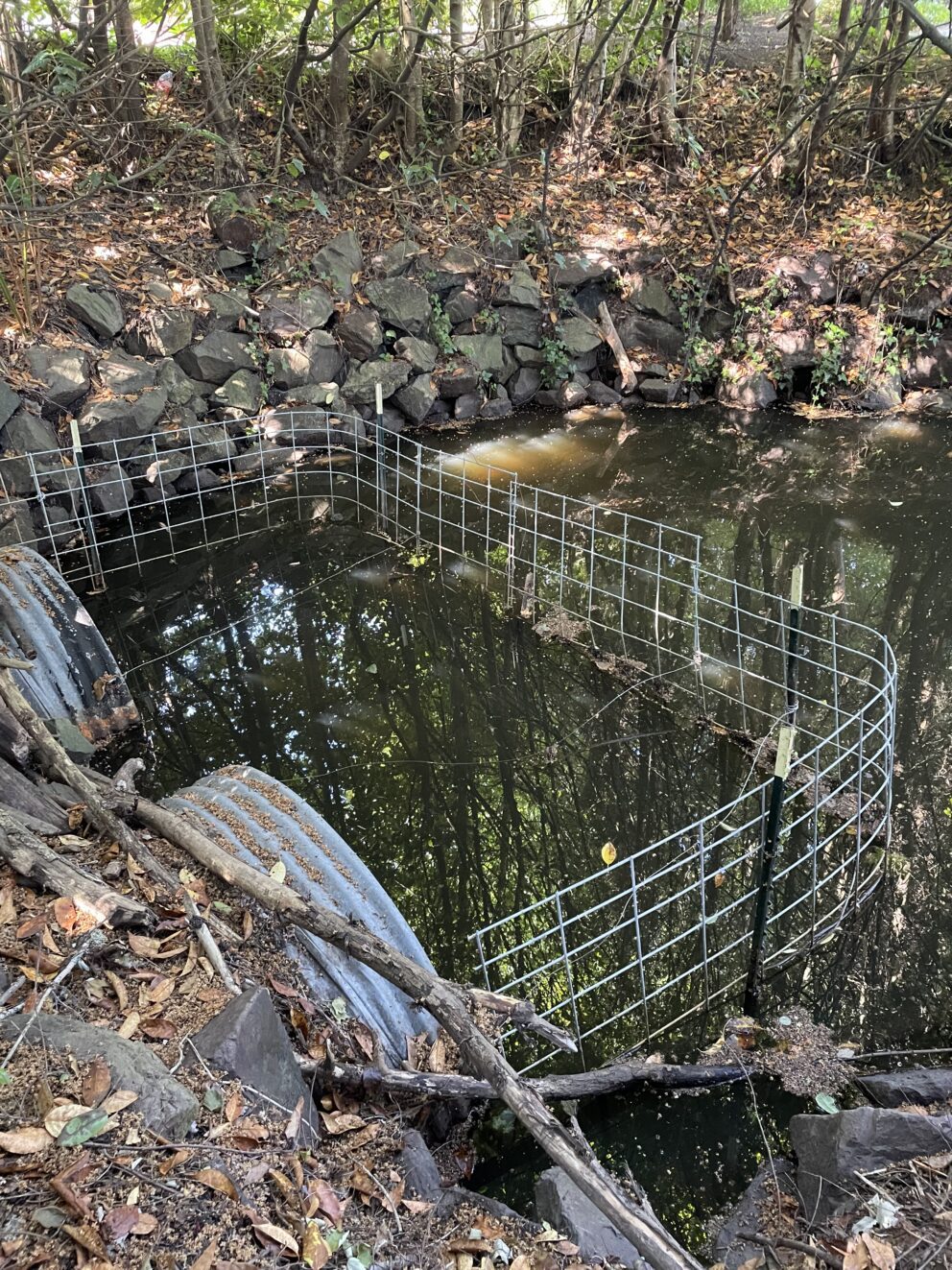
Day 3 – Device Monitoring
Today’s site visits in the Bellevue area were aimed at understanding the functionality of aging devices and their longevity.
The most memorable site we stopped at was a private property on the outskirts of a wetland. This home has been there since the 1960s and beavers have continually lived in the owner’s backyard, building dams along the stream and causing major flooding there. He appreciates this natural behavior and was more than willing to work with BNW to build a device that reduces water levels but supports the beavers.
This coexistence is especially important as the nearby town continues to grow, expanding the urban territory of the beavers and increasing the dam-building activity that leads to new flooding on nearby lands.
Day 4 – Carkeek Park
Today started off with a good session of wader repair—an especially important aspect of BNW’s work in a dense wetland habitat—and then we recycled some metal fencing material.
We stopped at Carkeek Park, next to Puget Sound, which quickly became one of my favorite places. Due to its location, this watershed is an important salmon run, inhabited by beavers that constructed a dam that’s over 50 feet long! Because this dam blocks the passage of salmon and floods popular trails, it’s an example of the delicate balance that must be maintained between animals and people inhabiting the same ecosystem.
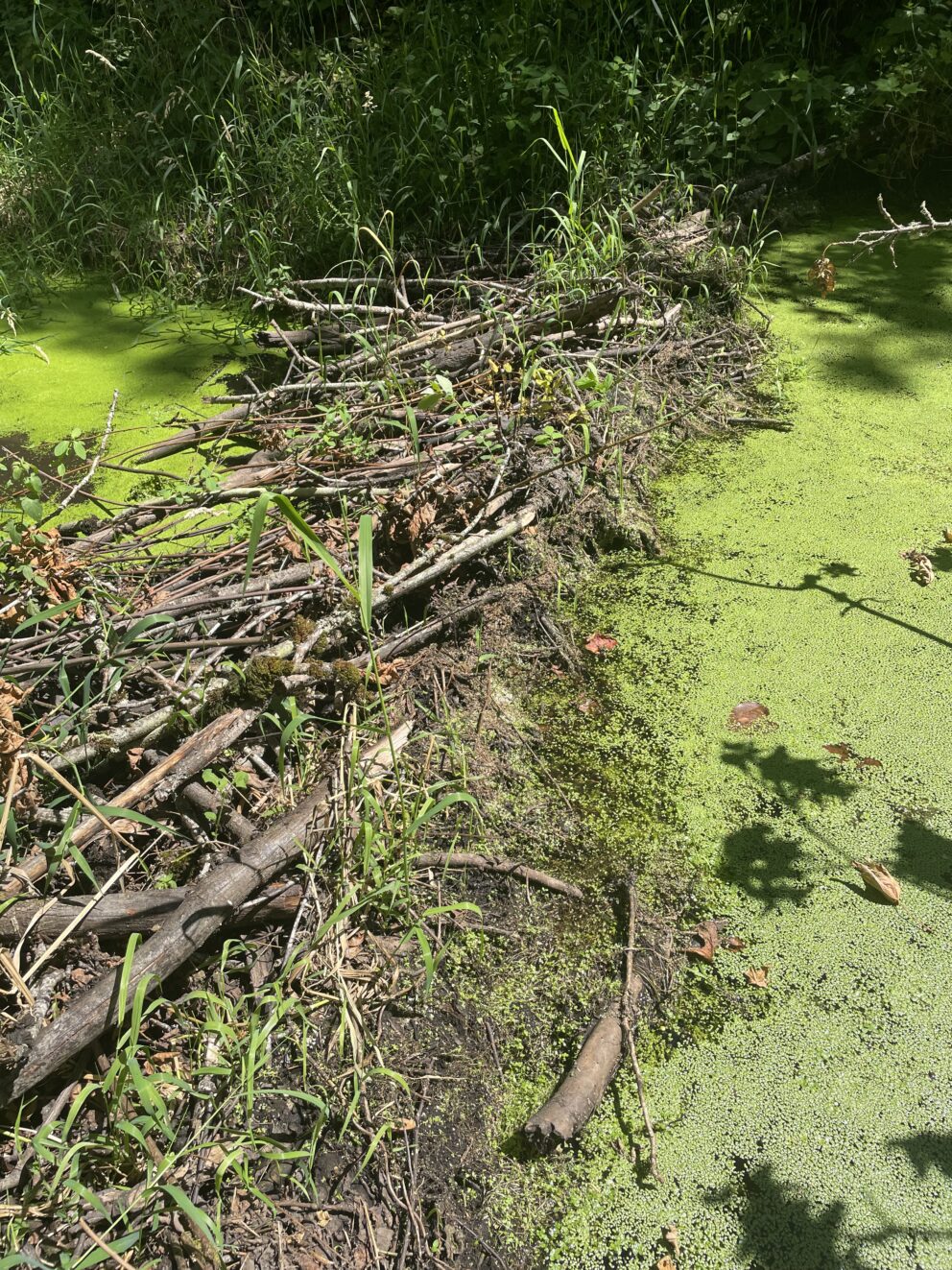
At this wetland area one of our tasks was to change out a wildlife camera memory card in an area where beavers were getting through the exclusion devices and rebuilding notched dams. The team had also set up a few coyote scent areas around the exclusion fencing to deter the beavers, so we spent some time re-scenting those areas to keep the smell “new.” We use coyote urine at Lincoln Park Zoo as scent enrichment for many of our animals as a way of eliciting natural behaviors—a connection worth noting.
Day 5 – Bloedel Reserve
We caught a ferry out to Bainbridge Island and during this trip I learned that some beavers will actually swim across sections of the Puget Sound (salt water) to inhabit these islands! At the beautiful Bloedel Reserve, staff were seeing signs of beaver activity and wanted to discuss the future of these animals in the area—how to coexist with them, how to prepare for them, how to reduce negative future impacts, and how to educate guests.
Afterwards, I took one of the self-guided nature walks that BNW offers, to Magnuson Park. I first spotted a small brown head floating in the water, then a young juvenile beaver swimming through the duckweed and stopping on small land areas to chew leaves—and my night was officially made! For the next hour, I quietly followed the beavers to different areas of their habitat. If I lost sight of them for a moment, I could always find them again by listening for the sound of beaver teeth chewing on a branch.
Day 6 – Beaver Release
Today I met up with the Tulalip Tribe Beaver Project team, who was releasing one set of beavers and working to trap another family of “nuisance” beavers (which proved non-cooperative).
We loaded the male and female beavers that were being released into crates, secured them in the bed of a truck, and drove 1.5 hours northeast to a release location in a watershed of the North Cascades. Once there, we had to carry each crate through the dense wetland habitat to the water source at the release site.
Watching a wild animal be released back into a habitat creates a mix of emotions. On one hand, you can’t help but smile as you witness the result of hard work and dedication. But you also worry, because life in the wild is not easy and these animals have a lot of work to do in their new territory. They must learn to navigate the new spot, build lodging, evaluate their water sources, and build dams, if needed.
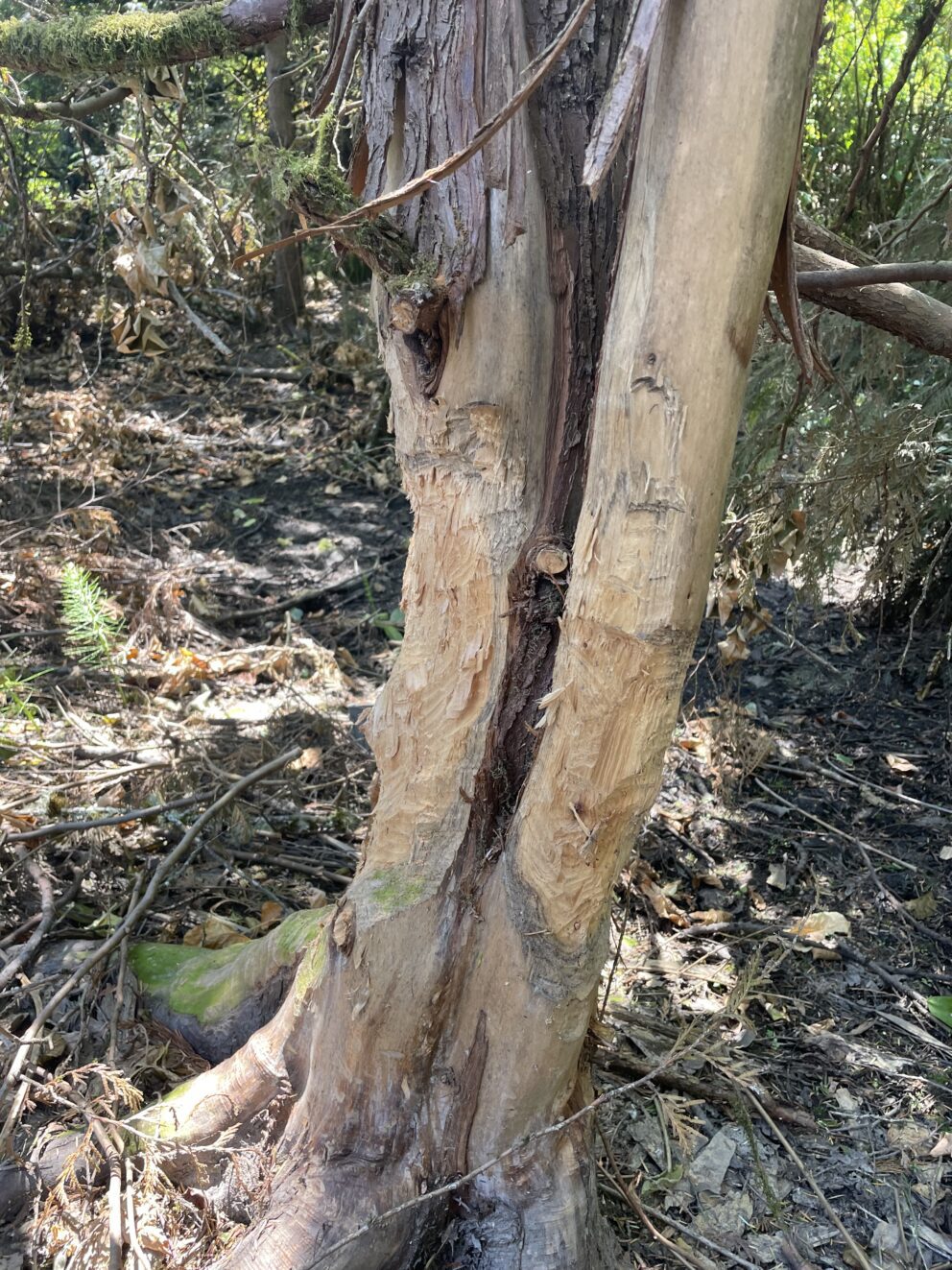
While in the area, we located a scent dispenser/ motion-activated camera setup that had been a vital tool in a partnership with Woodland Park Zoo monitoring animal populations in the national park—specfically, wolverines and fishers (a member of the weasel family). All data had been gathered, so the device was removed.
Day 7 – Further Device Monitoring
Today we visited existing devices and talked with landowners. Two of the sites we visited had pond levelers built by BNW over four years ago, and one of them was still functioning well. The other only recently became clogged with large amounts of sediment, but after trudging through the 3-foot-high sediment in muddy water, we saw that the device was still allowing a small trickle of water through the culvert!
The last site we visited was an exclusion fence that BNW had constructed over five years ago. Minus a couple of rusted pieces of wire, it was in great working condition. This longevity information is helpful to future beaver projects.
Day 8 – Tree Wrapping
Today was all about tree wrapping! We headed out to a large subdivision to wrap individual trees along a neighborhood stream, in an area where beavers have begun to move in and local homeowners were starting to worry about beloved trees.
We worked alongside two community members who wanted to learn how to wrap trees so they could do it themselves in the future. This included teaching them to use 4-foot-tall wire fencing with a 6- to 12-inch space between the wire and the tree trunk, stabilized with U-posts or wooden stakes. This allows growth as well as protection from determined beavers. The trees were located on a hillside, so we had to get creative with debris, sticks, and branches to help fill gaps and cover root systems.
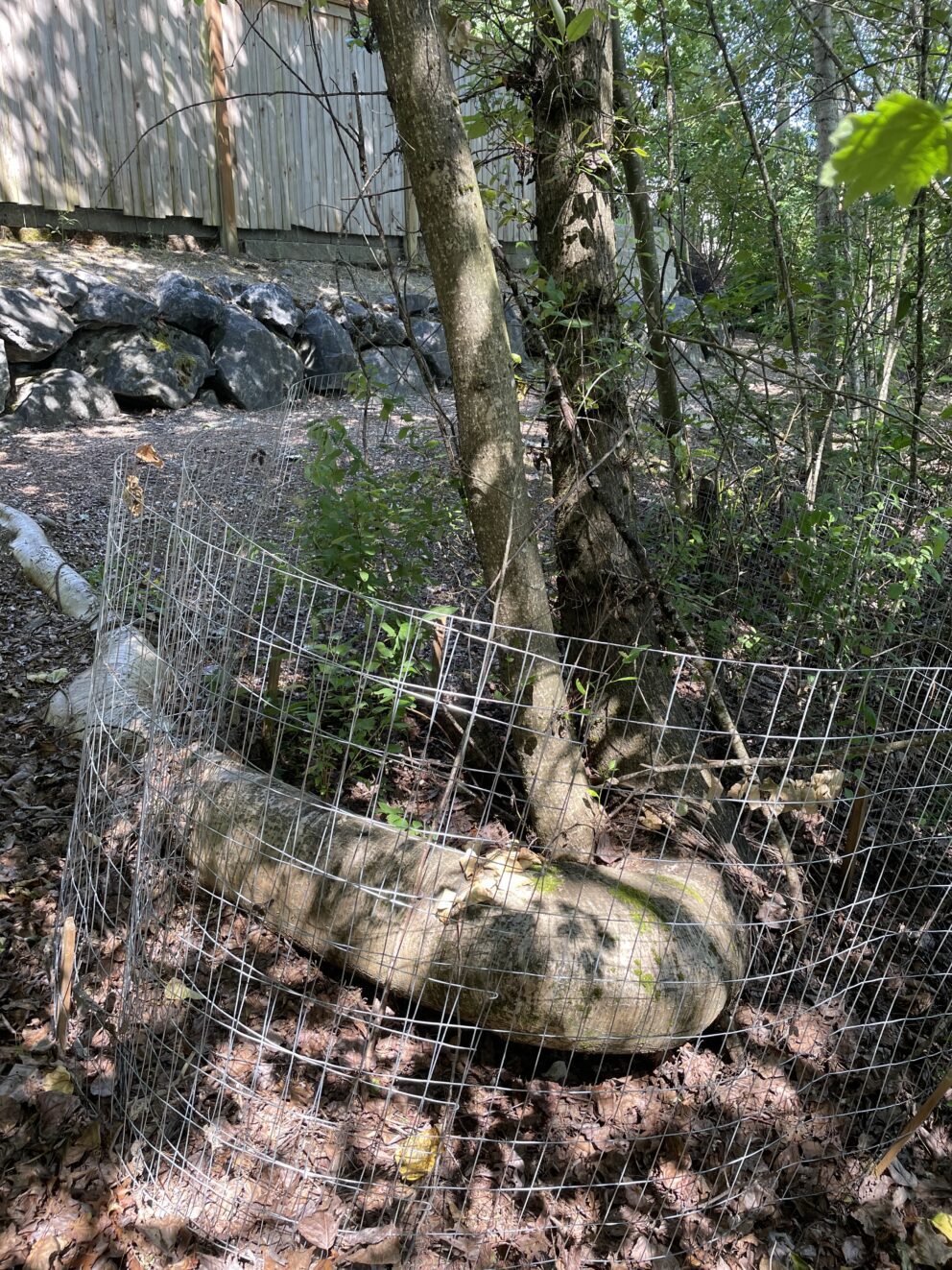
Later, we ventured for a canoe trip on Lake Washington, the second largest natural lake found in the state. There, we found a beautiful beaver lodge, which I would have never recognized before this trip. In another area, we were lucky enough to spot a couple smaller beaver heads swimming quickly through the water at sunset. Thank goodness for binoculars!
Day 9 – Whidbey Island
Today on Whidbey Island we met landowners with a beaver dam on their property that is causing flooding to the community downstream. They own a beautiful hillside house tucked next to a wetland pond—and next to this pond is a sophisticated beaver-built dam. We talked with them about local laws, permitting, exclusion devices, and the future of the pond.!
Day 10 – Northwest Trek
On my last day, I planned a trip down to Northwest Trek Wildlife Park. It’s home more than 40 different species of animals that can be found in the Northwest region, including beavers! It was my chance to see different habitat designs and new enrichment ideas.
My trip was officially complete when we spotted two beavers snuggling in their lodge—a lodge made with a section behind glass so we could see them even while they were napping. One of the zookeepers even took us behind the scenes to view their exhibit from above. We were able to geek out on everything from training to enrichment! I was beyond grateful for her taking the time to talk with us, and am grateful to have one more resource to reach out to in the future.
Day 11 – Final Thoughts
Today was my travel day back home. I reflected about what this opportunity meant to me and the ideas I would be bringing back with me to Lincoln Park Zoo. As zookeepers, we spend our work days caring for some incredible animals. We work hard to enhance and enrich the lives of each individual animal. They inspire us to see nature beyond our backyards.
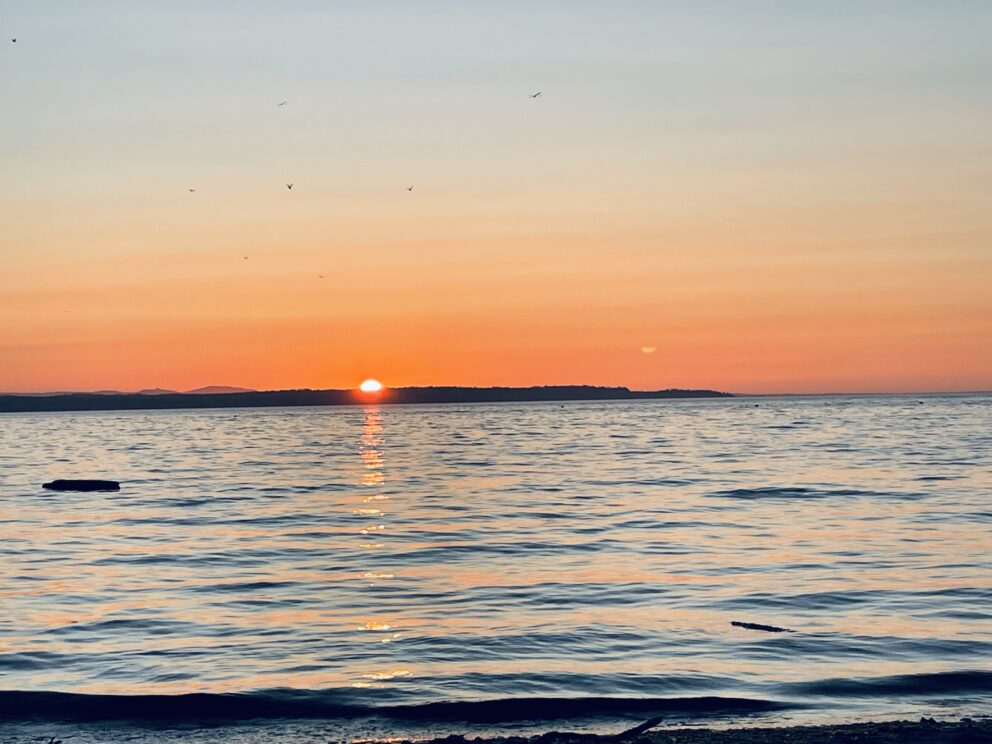
As stewards for these animals we have to be ready to learn, change, and grow based on their needs. This trip encompased all of that for me. Getting to work alongside the team at BNW was a chance for me to be a part of the bigger picture and learn firsthand how impactful this species is to the world around us. I am excited to bring this passion back to my team and come up with creative new ways to encourage natural animal behaviors and generate excitement from our guests.
